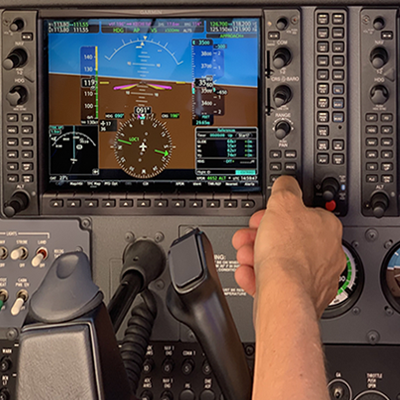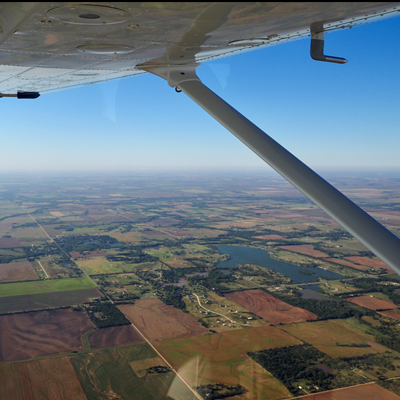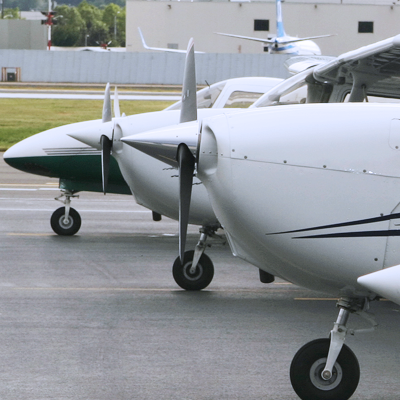Getting Your FAA Medical Certificate
How to Become a Pilot
- Getting Your FAA Medical Certificate
- Where Will You Learn?
- Choosing Your Instructor (CFI)
- Student Pilot Certificate, Flight Time & Aviation Scholarships
- Pilot Ground School & Knowledge Exam
- What’s in a Pilot’s Flight Bag?
- Maneuvers & Your First Solo
- Advanced Maneuvers & Your First Solo Cross-Country
- 4 Money-Saving Tips
- Acing Your Private Pilot Checkride
- You’re a Private Pilot - What’s Next?
In this 4-minute video, learn about your FAA Medical: How to get one, which certificate to choose, and how not to make a big mistake in the process.
Starting Flight Training? Why the FAA Medical Certificate Comes First
Have you ever been walking through a park, doing housework, or sitting in traffic when the sound of an airplane makes you stop and look up? While most people hardly notice, you pause, scan the sky, and wonder: What kind of aircraft is that? Where’s it going? What would it feel like to be up there, in control, flying above it all?
If that sounds like you, you’re not alone—and you’re in exactly the right place.
At King Schools, we’ve spent decades helping people like you turn their aviation dreams into reality. Whether you’ve always been fascinated by flight or you’ve recently started to consider becoming a pilot, the journey from dreamer to aviator begins with a few key first steps. This article will help you understand and complete the very first: getting your FAA medical certificate.
This is part one of our “Learn to Fly” video series—a collection of quick, informative videos that will guide you through the process of becoming a pilot. From medicals to ground school, flight instructors to checkrides, we’re here to help you fly smarter, save money, and stay inspired along the way.
Why Becoming a Pilot Starts with Your Health
Before you even schedule your first flying lesson, you’ll need to make sure you’re medically qualified to fly. The FAA requires pilots to hold a valid medical certificate, which verifies that you meet the necessary physical and mental health standards to operate an aircraft safely.
Some student pilots are surprised to learn this comes before training even begins—but it’s a wise first move. Here’s why:
- Peace of mind: If you have a medical issue that might affect your eligibility, you want to find out early.
- Training confidence: Knowing you’re medically cleared gives you the confidence to dive into flight lessons without hesitation.
- Long-term planning: Choosing the right type of medical certificate based on your flying goals will help set the course for your training and your career.
FAA Medical Certificates: What You Need to Know
The FAA offers several types of medical certification, and the one you need depends on the type of flying you want to do. Here’s a closer look at each:
BasicMed
- Great for recreational pilots.
- Allows you to fly certain small aircraft in the U.S. under specific conditions.
- Easy to qualify. Learn more about BasicMed
Third Class Medical Certificate
- The most common starting point for student pilots and private pilots.
- Required for solo flight, passing your checkride, and flying under Private Pilot privileges.
- Valid for up to 5 years (under age 40) or 2 years (over age 40).
Second Class Medical Certificate
- Required for commercial pilot privileges, such as flying for hire (e.g., banner towing, flight instruction, charter flying).
- Often a good choice for students planning a future in aviation.
First Class Medical Certificate
- Required to act as Pilot in Command (PIC) for most aviation jobs.
- If your goal is to fly for an airline or corporate operator, start here to ensure there are no medical obstacles down the line.
- Requires an annual renewal under age 40; semi-annual over age 40.
Pro Tip: If you’re not sure where your aviation path will take you, consider going for a First Class medical from the beginning. It doesn’t obligate you to become a professional pilot, but it ensures you’re physically cleared for any direction your journey might take.
How to Get Your FAA Medical Certificate: A Step-by-Step Guide
Step 1: Locate an Aviation Medical Examiner (AME)
Not every doctor can issue FAA medical certificates. You need to visit a certified Aviation Medical Examiner (AME)—a physician who’s been approved by the FAA to conduct flight physicals.
Use the FAA’s AME Locator Tool to search by zip code or region. Choose an examiner with good reviews or recommendations from local pilots.
Tip: Some AMEs are also pilots themselves and may better understand the needs of student aviators.
Step 2: Fill Out the FAA MedXPress Application Online
Before your appointment, go to the FAA MedXPress Portal and complete the application. You’ll need to create an account, answer detailed questions about your medical history, medications, surgeries, mental health, and more.
Be Accurate and Honest—what you report here becomes part of your permanent FAA record.
- Don’t omit past diagnoses or prescriptions, even if they seem irrelevant.
- If you’re unsure about something on the form, stop and ask a flight instructor or your AME.
- Incorrect answers can lead to delays, denial, or even legal consequences.
Step 3: Attend Your Exam Appointment
At your appointment, the AME will review your application and perform a physical exam. Expect the following:
- Vision test (distance, near, and color perception)
- Hearing test
- Blood pressure and pulse check
- Urinalysis
- Review of medical history
For higher-level certificates (especially First Class), the exam may also include an electrocardiogram (ECG), depending on your age.
Once you pass, you’ll leave with your FAA Medical Certificate in hand. You're officially cleared to begin flight training!
What Happens If You Have a Medical Condition?
Many pilots fly with health conditions, including asthma, ADHD, high blood pressure, or even a history of mental health treatment. The key is transparency and documentation.
If you think something in your health history might raise a red flag:
- Don’t panic—it doesn’t automatically disqualify you.
- The AOPA (Aircraft Owners and Pilots Association) has some great resources for you
- Gather medical records or supporting documentation as needed.
In some cases, you may need to apply for a Special Issuance—a waiver from the FAA that allows you to fly with a condition that is otherwise disqualifying. It takes more time and paperwork, but thousands of pilots successfully fly with these clearances every year.
What Comes After the Medical Exam?
Now that you’re medically cleared to fly, you’re ready for the fun part: flight lessons!
You’ll begin by:
- Getting your student pilot certificate
- Finding a flight school or instructor (more on this in our next article)
- Starting your Private Pilot Ground School to learn the rules, procedures, and knowledge for safe flying
Ready to Take the Next Step? Here’s What to Do Now
Check out King Schools’ Online Courses:
We offer step-by-step, video-based courses for every stage of your aviation journey—from your first ground lesson to advanced certifications.
Still have questions?
Contact our friendly team of flight training advisors: Contact King Schools








